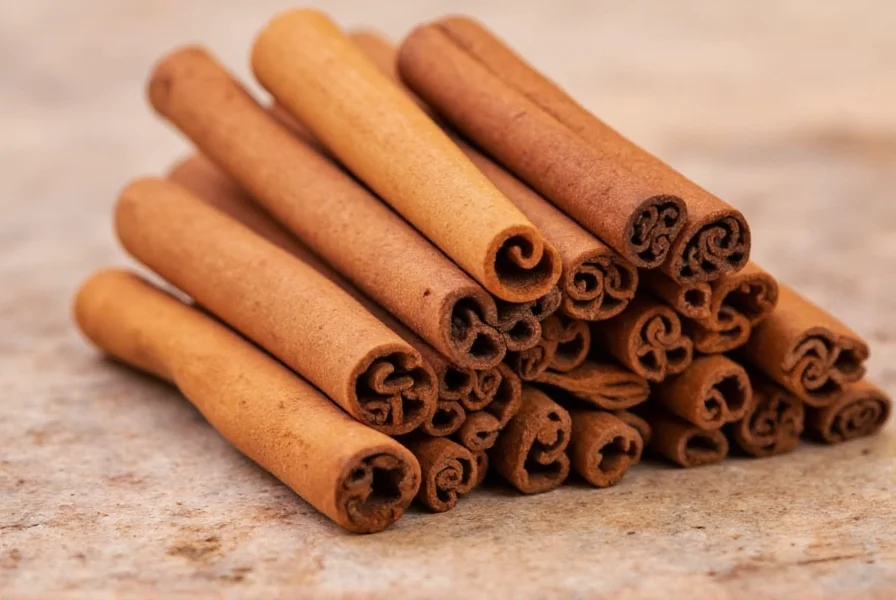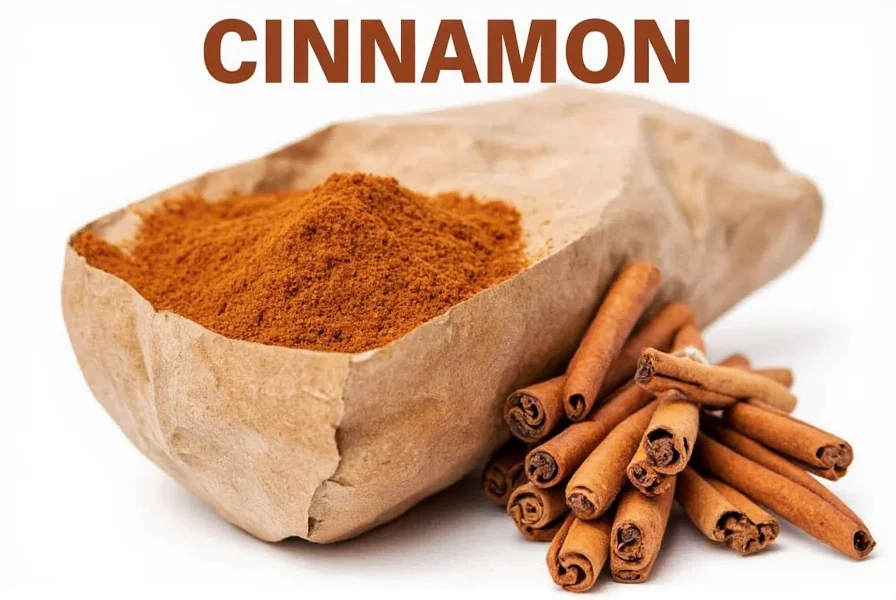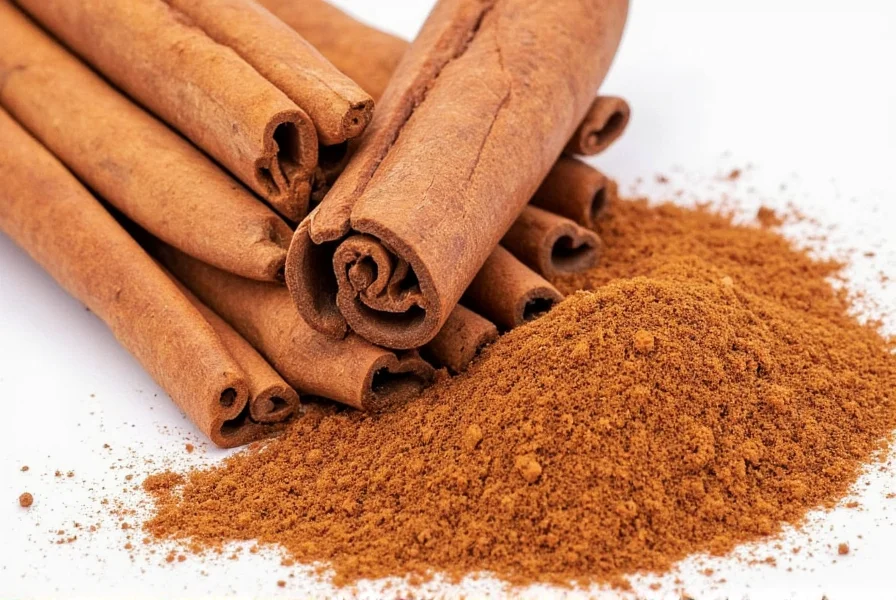When exploring the world of different kinds of cinnamon, understanding their unique characteristics helps you make informed choices for both culinary and health purposes. While many consumers think of cinnamon as a single spice, the reality is far more nuanced. Each variety offers distinct flavor profiles, appearance, and chemical compositions that affect their suitability for various applications.
Ceylon Cinnamon: The "True" Cinnamon
Originating from Sri Lanka (formerly Ceylon), this variety represents what many experts consider authentic cinnamon. Ceylon cinnamon comes from the Cinnamomum verum tree and features multiple thin, papery layers that form a delicate, hollow quill. When compared to other kinds of cinnamon bark, Ceylon appears light tan to light brown with a soft, brittle texture that's easy to grind.
The flavor profile of Ceylon cinnamon is notably milder, sweeter, and more complex than cassia varieties, with citrusy notes that make it ideal for delicate desserts and beverages. Professional chefs often prefer Ceylon for different cinnamon uses in baking where a subtle spice flavor is desired without overwhelming other ingredients.

Cassia Cinnamon Varieties
Cassia cinnamon accounts for approximately 90% of cinnamon consumed in the United States and comes from several related species. Unlike real cinnamon vs cassia comparisons suggest, cassia isn't "fake"—it's simply a different species with distinct properties.
Chinese Cassia (Cinnamomum cassia)
The most common variety found in supermarkets, Chinese cassia features a thick, single-layer quill with a dark reddish-brown color. It has a stronger, more pungent flavor with noticeable heat that works well in robust recipes like chai tea, mulled wine, and hearty stews. When examining different types of cinnamon sticks, Chinese cassia typically has a rougher texture and harder consistency than Ceylon.
Vietnamese Cassia (Cinnamomum loureiroi)
Vietnamese cinnamon contains the highest concentration of cinnamaldehyde, giving it the most intense flavor and aroma of all cinnamon varieties. Its deep reddish-brown color and extremely thick, hard quills make it easily distinguishable. This variety's potency makes it particularly suitable for cinnamon varieties for cooking applications where strong flavor is desired, such as in spice blends and certain meat dishes.
Indonesian Cassia (Cinnamomum burmannii)
Often called "korintje" cinnamon, this variety features a medium thickness with a reddish-brown color and moderately strong flavor. It's commonly used in commercial food production due to its lower cost and consistent flavor profile. When comparing different cinnamon types side by side, Indonesian cassia typically falls between Chinese and Vietnamese varieties in terms of intensity.
| Type | Appearance | Flavor Profile | Coumarin Content | Best Uses |
|---|---|---|---|---|
| Ceylon | Light tan, multiple thin layers | Delicate, sweet, citrus notes | Very low (0.004%) | Desserts, beverages, delicate dishes |
| Chinese Cassia | Dark reddish-brown, thick single layer | Strong, spicy, pungent | High (2.1-4.4%) | Robust dishes, spice blends, baking |
| Vietnamese Cassia | Deep reddish-brown, very thick | Most intense, hottest | Highest (6.97%) | Commercial products, strong-flavored dishes |
| Indonesian Cassia | Medium reddish-brown, medium thickness | Moderately strong | High (1.8-3.0%) | Commercial baking, everyday cooking |
Health Considerations: Understanding Coumarin Levels
One of the most critical differences between different cinnamon varieties involves coumarin content—a natural compound that can cause liver damage in high doses. Ceylon cinnamon contains only trace amounts (approximately 0.004% by weight), while cassia varieties contain significantly higher levels:
- Chinese Cassia: 2.1-4.4% coumarin
- Vietnamese Cassia: Up to 6.97% coumarin
- Indonesian Cassia: 1.8-3.0% coumarin
For regular consumption, especially for children, pregnant women, or those with liver conditions, Ceylon cinnamon represents the safer choice. The European Food Safety Authority recommends a maximum daily intake of 0.1 mg of coumarin per kilogram of body weight, which translates to approximately 1 teaspoon of cassia cinnamon for an average adult.
How to Identify Different Cinnamon Types
Telling different kinds of cinnamon apart requires attention to several physical characteristics:
- Quill structure: Ceylon forms multiple thin layers like a cigar, while cassia has a single thick, hard layer
- Color: Ceylon appears light tan, cassia varieties range from medium to dark reddish-brown
- Texture: Ceylon is brittle and easily crumbles, cassia is hard and difficult to break
- Taste test: Ceylon has a sweeter, more delicate flavor with less heat
When shopping for cinnamon, check product labels carefully. Many products simply say "cinnamon" without specifying the variety. Premium spice retailers and specialty stores are more likely to carry authentic Ceylon cinnamon, often labeled as "Ceylon," "true cinnamon," or "Cinnamomum verum."
Culinary Applications Guide
Understanding different cinnamon types for cooking helps maximize flavor in your recipes:
- For baking delicate pastries: Choose Ceylon for its subtle flavor that won't overpower other ingredients
- For hearty stews and curries: Vietnamese or Chinese cassia provides the robust flavor needed
- For breakfast dishes: Ceylon works best with oatmeal or yogurt where a milder spice is preferred
- For spice blends: Cassia varieties provide the stronger flavor profile that holds up in mixtures
- For daily consumption: Ceylon is safer for regular use due to lower coumarin content

Storage and Quality Preservation
To maintain the flavor and potency of various cinnamon types, proper storage is essential. All cinnamon varieties should be kept in airtight containers away from light, heat, and moisture. Ground cinnamon loses its potency more quickly than whole sticks—typically within 6 months versus 1-2 years for sticks.
When evaluating cinnamon quality, look for:
- Fragrant aroma when broken or ground
- Uniform color without dark spots
- Moisture-free packaging
- Recent harvest or packaging date
Conclusion: Choosing the Right Cinnamon
The world of different kinds of cinnamon offers diverse options for culinary exploration and health considerations. While Ceylon cinnamon provides a safer option for regular consumption with its delicate flavor, cassia varieties deliver the stronger, more familiar cinnamon taste that many associate with traditional recipes. Understanding these differences allows you to select the appropriate variety based on your specific needs—whether prioritizing health considerations, flavor intensity, or culinary application. By recognizing the characteristics of each type, you can make more informed decisions that enhance both the safety and flavor of your cooking.
Frequently Asked Questions
What's the main difference between Ceylon and cassia cinnamon?
The primary difference lies in their physical structure and chemical composition. Ceylon cinnamon forms multiple thin, delicate layers with a light brown color and sweeter flavor, while cassia varieties have a single thick, hard quill with a darker color and stronger, spicier taste. Most importantly, Ceylon contains negligible coumarin (a compound that may cause liver damage in high doses), whereas cassia varieties contain significantly higher levels.
Which cinnamon type is better for daily consumption?
Ceylon cinnamon is generally considered safer for daily consumption due to its extremely low coumarin content. Cassia varieties contain higher levels of coumarin, which may pose health risks with regular, long-term consumption. For people who use cinnamon daily in supplements, beverages, or cooking, choosing Ceylon provides a safer option without compromising on the spice's beneficial properties.
How can I tell if I'm buying Ceylon or cassia cinnamon?
Check the product label for specific identification—Ceylon should be labeled as "Ceylon," "true cinnamon," or "Cinnamomum verum." Physically, Ceylon forms multiple thin, papery layers that create a soft, hollow quill, while cassia has a single thick, hard layer. Ceylon is lighter in color (tan to light brown) compared to cassia's darker reddish-brown hue. If uncertain, specialty spice retailers are more likely to carry authentic Ceylon cinnamon.
Which cinnamon variety has the strongest flavor?
Vietnamese cassia (Cinnamomum loureiroi) contains the highest concentration of cinnamaldehyde, giving it the most intense flavor and aroma of all cinnamon varieties. It's significantly stronger than Chinese cassia and much more potent than Ceylon cinnamon. This makes Vietnamese cassia ideal for recipes requiring bold cinnamon flavor, though it may overwhelm more delicate dishes where Ceylon would be preferable.
Can I substitute Ceylon cinnamon for cassia in recipes?
Yes, but with flavor adjustments. Since Ceylon has a milder, sweeter profile compared to cassia's stronger, spicier taste, you may need to use 25-50% more Ceylon to achieve similar flavor intensity. In delicate recipes like custards or light cakes, Ceylon often works better without modification. For robust recipes like chai or spice cakes, you might prefer cassia's stronger flavor, or increase the Ceylon quantity slightly to compensate for its subtlety.











 浙公网安备
33010002000092号
浙公网安备
33010002000092号 浙B2-20120091-4
浙B2-20120091-4